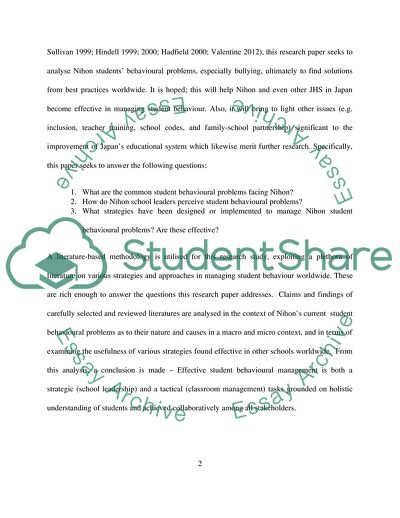Cite this document
(Managing Students Behaviour at Nihon Junior High School Literature review Example | Topics and Well Written Essays - 4500 words, n.d.)
Managing Students Behaviour at Nihon Junior High School Literature review Example | Topics and Well Written Essays - 4500 words. https://studentshare.org/education/1793239-educational-leadership-and-strategy
Managing Students Behaviour at Nihon Junior High School Literature review Example | Topics and Well Written Essays - 4500 words. https://studentshare.org/education/1793239-educational-leadership-and-strategy
(Managing Students Behaviour at Nihon Junior High School Literature Review Example | Topics and Well Written Essays - 4500 Words)
Managing Students Behaviour at Nihon Junior High School Literature Review Example | Topics and Well Written Essays - 4500 Words. https://studentshare.org/education/1793239-educational-leadership-and-strategy.
Managing Students Behaviour at Nihon Junior High School Literature Review Example | Topics and Well Written Essays - 4500 Words. https://studentshare.org/education/1793239-educational-leadership-and-strategy.
“Managing Students Behaviour at Nihon Junior High School Literature Review Example | Topics and Well Written Essays - 4500 Words”. https://studentshare.org/education/1793239-educational-leadership-and-strategy.


